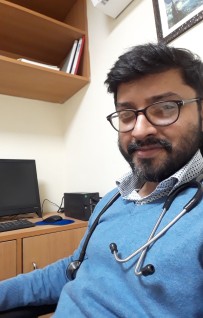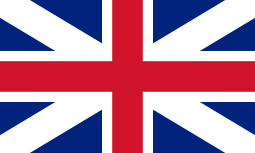Update of Cannabis and its medical use

Dr. Priya Ranjan Avinash, Chief psychiatrist in Sarvam Neuropsychiatric hospital, New Delhi.
He has already contributed to this blog magazine with an article about women mental health.
Introduction
There is a heated discussion going on while I write, the world over to make “medical cannabis” legal.
After alcohol, it is the 2nd most widely used psychoactive substance world –wide. Its use is largest among the youth and there is an increasing trend in the western world. Already it has been legalized in 23 states of US, Canada, Australia and some European countries.
And leading the race, Canada even intends to legalize its non medical use too very soon.
Terminology
Cannabis: Cannabis is the preferred designation of the plant Cannabis sativa, Cannabis indica, and of minor significance, Cannabis ruderalis.
Cannabinoids: Cannabinoids are basically derived from three sources:
(a) Phytocannabinoids are cannabinoid compounds produced by plants Cannabis sativa or Cannabis indica;
(b) Endocannabinoids are neurotransmitters produced in the brain or in peripheral tissues, and act on cannabinoid receptors;
(c) Synthetic cannabinoids, synthesized in the laboratory
Among the Phytocannabinoids Cannabis sativa is the commonest – highest THC (THC: psychoactive). However some agricultural process can further increase THC’s concentration , like “Sinsemilla” technique gradually leading to high THC and low CBD. CBD may have opposite effect to THC
There are Complex alkaloid mixture of more than 400 compounds derived from the Cannabis sativa plant. In total 60 different compounds described with activity on the cannabinergic system. Some of the most abundant cannabinoids are :
Delta-9 tetrahydrocannabinol (most psychoactive)
Cannabidiol (CBD)
Cannabinol (CBN)
Endocannabinoids : Are found Naturally in the human body. They work on the G- protein coupled receptor family CB1 & CB2
Two most studied endocannabinoids are
- Anandamide( N- arachidonoylethanolamine)
- 2- arachidonoylglycerol (2-AG)
CBD and CBN
CBD: binds predominantly on CB2 and on 5-HT1A. they have anti –depressant and anxiolytic, properties. They are neuroprotective and non-psychoactive.
CBN: does not bind to CB1 or CB2
: Acts as indirect antagonist of cannabinoid agonists
Synthetic
These are Pharmaceutical preparation for research and clinical purposes
Some of them are
- Dronabinol/ Marinol- 1985, oral FDA approved – 1st one to get approved for medical use.
- Cesamet/ Nabilone- more potent than THC
- Cannador- capsule , 2:1 ( THC:CBD)
- Nabiximols/ Sativex- oromucosal spray, 1:1(THC:CBD)
- Epidiolex- 99% CBD, undergoing research, may soon be in the market
History of Marijuana
6000 BC – Cannabis seeds used as food in China
4000 BC – Textiles made of hemp in China
2727 BC – first recorded medicinal use in Chinese Pharmacopoeia
1400 BC to AD – trade moves product through India, Mediterranean countries, Europe – numerous medicinal uses reported.
1378 – Emir of the Ottoman Empire makes the first edict against eating hashish or smoking cannabis – 1st “War on Drugs”
1798 – Napoleon declared total prohibition on marijuana after realizing much of the Egyptian lower class were habitual smokers
1868 – Egypt – 1st modern country to outlaw cannabis ingestion
1890 – Hashish made illegal in Turkey
Modern era- medicinal “sea-saw”
1843- O’Shaughnessy , used crude cannabis preparations inspired from Indian Vaids for convulsions and spasm
Soon became part of both British and American Pharmacopeias
But by the middle of 20th century one by one it was taken out from both
1960- Revival of interest again, principally for the recreational value
Multiple movements since then to revive it some social, cultural few scientific
Plant-derived cannabis preparations made by government-licensed producers
Licensed producers with Controlled concentrations and formulations
Mostly smoked or used in vaporizers however May also be drunk as tea, made in the form of edible cookies, brownies etc
Cannabis oil- produced by steam distillation, may be used local , can also be taken orally or through vaporizers
Function of endocannabinoid system(Central)
Neurogenesis , Neuroprotection , Cannabinoid and sensory functions, Appetite and Nausea
Sleep, Seizure activity, Motor functions, Cognitive functions
Function of Endocannabinoid system (Peripheral)
GI tract, Cardio-Vascular System, Liver, Immune System, Muscle, Reproductive system and Skin.
Uses of Cannabis and cannabinoids as Medicine; current and approved use (Internationally)
Nausea and vomiting:
- Mostly helps in nausea and vomiting due to the use of chemotherapy agents.
- Effective in lower dosage
- High dosage –paradoxical hyper emesis syndrome
- Action is through the endocanabinoid system
Appetite Stimulation:
- Specially in cachexic patients of HIV-AIDS
- But mostly increase carbohydrate intake- may not help in building mass
- Enough evidence
- Cochrane review- mildly supports
- May also be effective in Anorexia Nervosa
- May be found to be more robust among the habitual cannabis user from before
Chronic/Acute Pain:
- In Canada Sativex approved for Neuropathic pain
- Also in Pains associated with RA, Post-operative pain, Spasticity causing pain in MS, Cancer pains etc
- Better (synergistic) , if combined with other conventional pain relief agents
- May require higher dose, leading to high psychoactive effects and potential for addiction
Proposed uses
- Much of the recent research literature deals with it.
- Evidence of efficacy generally less clear
- There is great variation in amount and quality
Multiple Sclerosis
- Moderately effective in relieving neurogenic pain
- Relieves spasticity too
- Evidence for both smoked cannabis as well as nabiximols oral spray
- Use of combined THC-CBD preparations decreased side effects and improved compliance
- Approved in Australia
Epilepsy
- Has both central as well as peripheral system theory
- Chronic exposure may reduce CB1 and may lead to seizure
- Clinical trials with 99% CBD for treatment of childhood epilepsy is in progress in US
Cancers
- Some lab evidence
- But no clear clinical evidence
- CBD> THC (CBD has more robust evidence than THC)
- May also decrease proliferation as well as metastasis
- Has been found to reduce ICT in brain tumors , but did not improve the outcome
- Only effective at very high dose
- Tolerability issue
Anti- Inflammatory Action
- Both CBD, THC has been found to have some evidence
- Both through CB as well as non-cannabinoid receptors
- Symptomatic relief mainly in Crohn’s disease and UC, but objective evidence lacking
- May be due to the euphoric effect
PTSD
Improves – sleep quality
– Hyper vigilance
– Prevent of recall of extinguished
Conditioned fear responses
Psychosis
- CBD has no psychoactive effect
- Rather blocks THC –CB1 binding
- So may decrease the psychoactice effect of THC
- Might be useful even in cannabis induced psychosis
Substance use disorder
- May affect the reward pathway
- CBD might have anti-addictive properties
- May help even in cannabis withdrawal
- Recently Nabiximol was tried in Austarlia for this purpose and was found effective ( Allsop; copeland; Lintzeris. 2014)
Neuroprotection
- AD ( Alzheimer’s disease)
- AMLS ( Amyotropic lateral Sclerosis)
- HD( huntington’s disease)
- Hydrocephalous
- Increased ICT( Intracraneal tension)
- PD( parkinson’s disease)
- long term use-cognitive decline
Obesity
- CB1 inverse agonist- Rimonabant, earlier marketed for weight reduction , especially in obesity due to use of psychotropic medications. But now withdrawn due to side effects, like depression and anxiety
- High dosage of THC might inhibit rather than stimulate appetite
Glaucoma
- THC does reduce IOT ( Intraocular tension)
- But require frequent dosing – leading to side effects
- Need to develop a topical agent to counter that
- 3 Cannabinoids are hitting the News , lately for this indication.
- Treatment of symptoms Vs treatment of disease
- Mostly helps in a wide variety of symptoms
- Some promising curative roles are
- anti-cancer
- THC and CB2 specific cannabinoids may inhibit viral enzyme that enables the HIV virus to reproduce
Dosage
- Quite variable
- Depending on mode and formulations
- Start low- go slow
- Therapeutic effect curve is like an inverted U shape- and often high dosage leads to reversal of the effects.
Contraindications
Five types of patients
- Pregnant and lactating women
- Children and adolescent- FMRI studies
- SUD ( Substance use disorder patients( debatable)
- Personal and family history of psychosis
- Heart disease and coronary artery diseases
Evidence of comparative clinical efficacy
Till now not enough evidence as the 1st line agent for any of the indications and the recommendation is to combine for nausea and pain with other established agents
For appetite stimulation most robust evidence and Some evidences can be due to the perceived “high” , as more robust evidence among previous users
Entourage effect
User-reported belief is that the benefit of smoking the whole plant product provides more relief than orally-administering the isolated cannabinoids
3 probable reasons
- CBD counters the anxiety and psychosis due to THC
- Pharmacokinetic- smoking- immediate effect
- Some non Canbinoids can also have medicinal properties
Adverse effects
Cognition and coordination
- Attention, concentration, decision-making, impulsivity, inhibition (self-control of responses), reaction time, risk taking, verbal fluency and working memory were impaired acutely in a dose-dependent manner, Particularly in occasional users
- Accidents at driving and at work-Impaired , judgment and thinking
Psychosis and Schizophrenia
- May cause delusional thoughts, anxiety and depression and psychosis , all may persist
- May exacerbate or trigger relapse
- Susceptible individuals in general population ,specially if the age of onset of use is early
- A/W , lowering of age of onset of Schizophrenia
Pulmonary diseases
- Chronic Bronchitis
- Sputum production, Wheezing etc
- Lung cancer risk, may be due to smoking and the mode of intake
- But evidence suggest that it does not lead to COPD
Cancers
Other adverse effects
- Decreased fertility
- Childhood and adolescents – cognitive deterioration
- Addictions
- Hyper emesis syndrome
Areas for future research
- There is a need to develop better ways to extract and purify various cannabinoids .We may find cannabinoids that does not work on the CB1 or CB2, and haence are safer.
- More research should be done on individual CBD
- Develop drugs which affects the endocannabinoid production and destruction rather than acting on the endo cannabinoid receptors
- Studies with chemical finger print
- Studies on better delivery systems , like vaporizers
Since natural cannabinoids can’t be patented, studies may not have the financial thrust
Conclusions & Implications
- Therapeutic use is mainly limited to (current evidence)
- Nausea
- Vomiting
- Appetite stimulation
- Certain types of pain
- Combining cannabinoid with the established medications might be better clinically
- Well designed clinical trials are still lacking for most of the anecdotal indications
- Broad spectrum of action with multiple side effects
- Smoking cannabis , not as good as the synthetic cannabinoids for individual conditions
- Need to develop safer delivery methods
References
- Whiting PF et al. Cannabinoids for Medical Use: A Systematic Review and Meta-analysis. JAMA. 2015; 313(24):2456-2473.
- Hill KP. Medical Marijuana for Treatment of Chronic Pain and Other Medical and Psychiatric Problems: A Clinical Review. JAMA. 2015;313(24):2474-2483.
- Vandry R et al. Cannabinoid Dose Accuracy in Edible Cannabis Products. JAMA. 2015; 313(24):2491-2493.
- Maldonado R et al. The endocannabinoid system and neuropathic pain. Pain. 2016;57(2). Supplement 1
- Natural Medicines Database. Marijuana
- Kalant H, Porath-Waler A. Clearing the Smoke on Cannabis – An Update . Canadian Centre on Substance Use. 2016.
- Health Canada Information for Health Care Professionals: Cannabis (marijuana, marihuana) and the cannabinoids.
- Ashton CH et al. Cannabinoids in bipolar affective disorder: a review and discussion of their therapeutic potential. Journal of Psychopharmacology. 2005;19(3) 293–300.
- Benarroch EE. Synaptic effects of cannabinoids. Neurology. 2014; 83: 1958-1967.
- Hall W. What has research over the past two decades revealed about the adverse health effects of recreational cannabis use? Addiction. 2014; 110: 19-35.

 English
English Italian
Italian